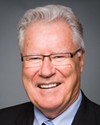Thank you, Laura and Marion.
First of all, I want to say, Laura, please convey my thoughts to John about this paper. There's an abundance of precision here. I always enjoy going to the table of contents and realizing that I already appreciate what's in the paper in terms of the subject matter, and you've broken it down.
I think at this point, as this is the last round of questions, what we understand about the First Nations Land Management Act can at times be a little restrictive in some of the broader economic initiatives that are occurring. Outside of the paper, Laura and Marion, perhaps you could comment on process: practical and overview perspectives on developments that include a group of first nations.
I'm thinking of the Ring of Fire, for example, in northwestern Ontario. Four of the communities that are going to play a pivotal role in that are in my riding in the west corridor. I don't know how much you know about this project, but it's the largest chromite deposit in the world, with a 200-year sustainability capacity, so it's significant. We're just embarking now on the process of working through the environmental assessments, in the context of whether it's a joint panel review or the more standard CEAA process. In my own assessment and knowledge, there is some dispute among communities themselves.
If you have any experience in these regards, I'd appreciate your perspective: how we approach that kind of scenario, because the land management act deals with the specific reserve. I'm not sure this fairly reflects...I'm starting to understand just through the Ring of Fire, for example. The other one I would use is the Whitefeather Forest Initiative, where it's just Pikangikum, and they have their stewardship planning process.
At the same risk Linda had of making this a 10-minute question with a 30-second response—and I mean no offence to my colleague—step outside the box, perhaps this paper, and reflect on that and maybe discuss some approaches or your own experience.






